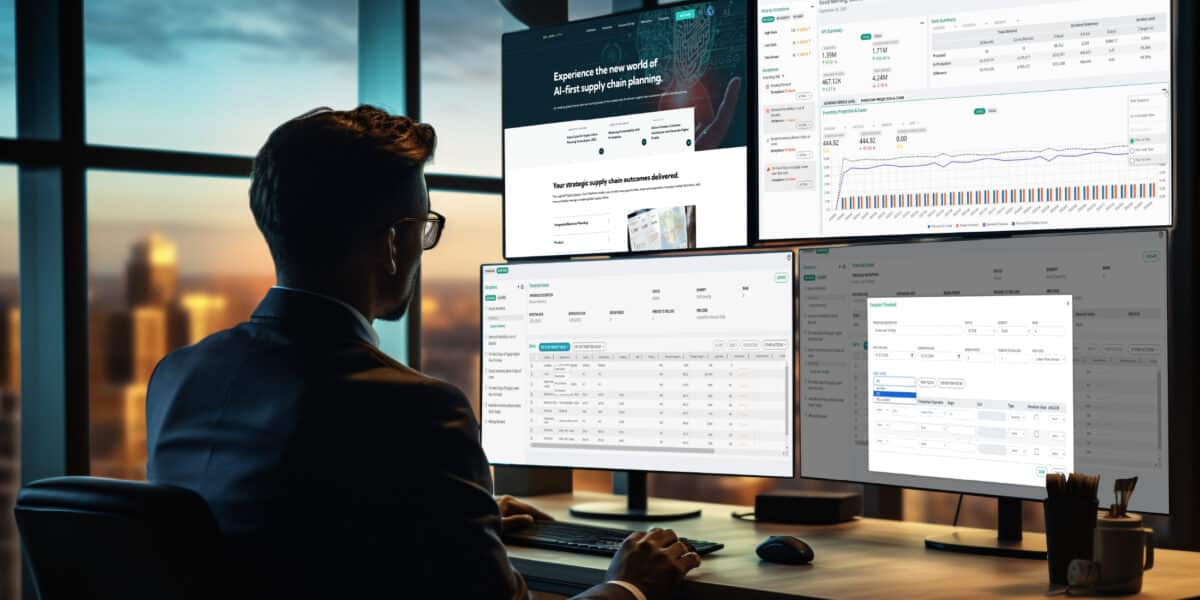
 As a classical and jazz musician, I understand the need for both structured and artistic abilities when performing. In its basic form, music is a mathematical language. What sets a professional musician apart from an amateur often is the ability to express oneself artistically through the instrument and make that special connection with an audience.
As a classical and jazz musician, I understand the need for both structured and artistic abilities when performing. In its basic form, music is a mathematical language. What sets a professional musician apart from an amateur often is the ability to express oneself artistically through the instrument and make that special connection with an audience.
Art and science come together in supply chain management, too. While many aspects of supply chain planning are ruled by well-defined mathematical relationships, many areas rely more on “artistic” application of experience. The duality comes into play when addressing the question of how many Stock Keeping Units (SKUs) a demand planner should be able to manage. Like a professional musician, a supply chain professional must use both supply chain expertise and experienced-based ability to answer the question.
The number of products a planner can manage is heavily dependent on how easy or difficult it is to develop a reasonable forecast for those products. Improving a planner’s efficiency depends on a number of industry and company variables:
The Nature of Your Business and Products
Planning for mature products with constant demand is straightforward compared to planning for new products, products with short lifecycles and products with seasonal or intermittent demand.
The Value of Your Products and the Cost of Forecast Error
How much does it cost if an item goes obsolete? How much does it cost if you lose a sale? If the cost of obsolescence or lost sales is very high, the cost of adding additional planners to minimize obsolescence and lost sales can be justified.
Data Used to Create Forecast
Many companies use shipment or order history to create a statistical forecast. However, it is becoming more common for companies to augment their historical forecasts with information that originates closer to true consumer demand, as well as forward-looking information provided by sales and marketing, or customers. It takes additional time for a planner to review and act on forward-looking collaborative information. For example, Point of Sale (POS) data can often improve forecast accuracy, but also complicates the creation of a consensus forecast.
Forecast Data Completeness and Accuracy
If the data used to create forecasts is complete and accurate, less time will be spent manipulating the data and preparing it for forecasting and fixing problems discovered after the forecast is created. Likewise, correcting the business assumptions or planning model may take a little longer in the short-term, but will fuel more benefits in the future than plugging in a manual override for the forecast. You also want to leverage the ability to annotate the business reasons why a change is being implemented.
The Skill Level of the Demand Planner
Supply chain planning proficiency takes both knowledge (education and training) and experience. The more knowledgeable a planner is on their specific responsibilities and the more experience they have in their industry and company, the more effective and efficient they will be.
The Use of ABC Product Segmentation when Forecasting
More often than not, 20% of a company’s products (A Items) will roughly produce 80% of the company’s unit and/or dollar sales. It makes good business sense to ensure you have the highest forecast accuracy for “A” items. If planners can spend less time on “B” and especially “C” items (because the forecast accuracy targets for them are lower) they can handle more “A” items.
Level of Aggregation at Which Forecasts are Created
Most companies produce and sell SKUs, so most companies create forecasts at the SKU level. Producing and selling 10,000 SKUs requires managing 10,000 separate forecasts each forecasting period. However, some companies manage SKUs at the location level (commonly referred to as SKULs). If your 10,000 SKUs are spread across ten facilities, you have 100,000 forecasts to manage. While other companies forecast at a product category level, managing aggregations of SKUs and “fair sharing” the aggregated forecasts down to lower levels of detail.
Last, But Not Least, the Technology Used for Planning
More than 50 percent of companies still use spreadsheets for demand and supply planning. Surveys show that the number one issue holding back companies from improving planning capabilities is the lack of deployed supporting technology, but many have relied on spreadsheets for decades. As the saying goes, how can you expect different results if you keep doing the same thing? Automating data collection, filtering, manipulation, and analysis gives planners more time for value-added activities allowing them to manage more SKUs. A planning system should provide the ability to manage by exception through alerts and/or prioritized lists, based on pre-determined parameters and limits. A demand planner might be directed to a list of products that are prioritized by the highest Weighted Mean Absolute Percent Error (WMAPE) weighted by product margin. Products that fall within their pre-determined WMAPE limits will not have to be reviewed, saving countless hours of highly valuable planner time.
The number of SKUs a planner can manage depends on a number of (mostly) controllable factors. As with many aspects of supply chain management, it comes down to people, process and technology. Planner training and experience is key to how many SKUs they can effectively handle. Improving planning technology not only leads to more effective planning, but also to more efficient use of the planning staff’s valuable time. When planners can focus more time on higher-level activities, they become greater drivers of top-line growth and bottom-line profits.



